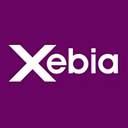Intelligence Business Process Automation
A business process is a set of tasks that accomplish a specific organizational goal. These sets of activities and tasks/functions, once completed, will deliver a service or product to the client. The process involves clearly defined inputs and a single output. These inputs are made up of all of the factors which contribute to the added value of an output, i.e., service or product.
Robotic Process Automation (RPA), as the name implies, automates the process with the intent of reducing human effort in continuous repetitive tasks.
RPA is outshining nowadays due to its functionality, accuracy, efficiency, and robustness in the optimization of the business processes. By automating repetitive tasks, a user can involve in a more productive job rather than doing a work which requires minimum human energy and innovation. One of the most prominent capabilities of RPA is the effortless integration of closed and open platforms.
Robotics Process Automation is very useful when we want to automate the business process while improving accuracy and efficiency.
Some of the sample use cases are:
- Integration of data from various sources
- When sending data to multiple user or applications
- Rule-based or repetitive task-based on the policy
- When the process is simple but too lengthy to perform
- When the process is very complicated but short and prone to human error
Robotic Process Automation (RPA) is a structured automation process. Any business process can be automated, using simple flowchart and activities. RPA provides platform-independent automation solutions and can work with desktop, web applications, and virtual applications.
In simple terms, RPA is automating the process using pseudocode, flowchart, and sequence. We are not concerned about the code that the tool generates at its backend. However, to gain expertise in RPA, it’s best to know about the following topics -
There are multiple tools available in the market for RPA implementation, such as :
However, UiPath, Automation Anywhere, and Blue Prism are the most popular and widely used automation tools. Blue Prism is a desktop-based tool and is very good at automating back-end applications and provides more security while automating processes. On the other hand, in terms of flexibility, UiPath is advantageous. UiPath is a robust tool with a lot of inbuilt capabilities.
UiPath consists of three major components:
- Studio: It is an advanced tool that helps to design and develop automation processes based on business requirements.
- Robot: It used to execute the process built in the studio- in user-defined machines.
- Orchestration: The orchestrator is used to deploy and schedule bots according to the business requirements.
With the growing market for RPA, every RPA company is striving to develop an intelligent solution for its customers. Intelligent business process automation is all about automating the business processes while making the application more capable of making business decisions without human intervention.
Unlike any human, RPA is capable of mimicking human behavior on a computer system but can’t make decisions. To make intelligent decisions, we require a brain, and this is where Artificial Intelligence comes in the picture. With the help of Artificial Intelligence, we can create smart bots which can act like a human and take a decision on their behalf.
AI capabilities in the RPA tool are not something inbuilt, and we require external systems that can perform these tasks. These systems will be responsible and will work as a brain for software robots.
Cognitive Services
Cognitive Services are a purpose-built collection of AI algorithms and application programming interfaces (APIs) to help developers add AI capabilities to websites, apps, and AI agents. Cognitive Services allow enterprises lacking the necessary AI research staff, infrastructure, and budget to select AI tools for their needs.
Companies which provide cognitive services include:
Python and RPA (UiPath)
UiPath offers easy integration with Python, an open-source programming language that supports multiple machine learning/deep learning libraries. Integration is straight forward given that we follow some simple standards during our python code and UiPath bot integration.
Note: As of now UiPath (v2018.2.3) support Python 3.x < 3.7 (32-bit).
Python
- For easy installation of Python, use Anaconda 32-bit version.
- While writing code, use the absolute path of the file in Python code or pass the path as a parameter from UiPath.
- Only use double quotes “ in Python code.
- Use a global variable to use the same variables in multiple functions.
- Use JSON(with all value in “) module to return multiple values.
UiPath
To integrate the use root path of the Python/Conda installation folder.
Activities supported by UiPath:
- Python Scope — A container that provides scope for Python activities.
- Invoke Python Method — Helps you run a specified method from a Python script directly in a workflow.
- Run Python Script — Enables you to execute Python code. You can input the code directly in the activity or provide a file path for it.
- Load Python Object — Converts your Python code to a PythonObject variable.
- Get Python Object — Retrieves the value inside a Python object as a .NET type to be used in a workflow.
Logic from external Python script can be used using the Invoke Python Method activity.
Convert Invoke Python Method return object into the string before deserializing JSON.
Source Code: https://github.com/llabhishekll/intelligence-business-process-automation

